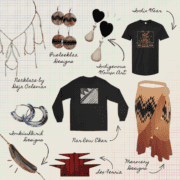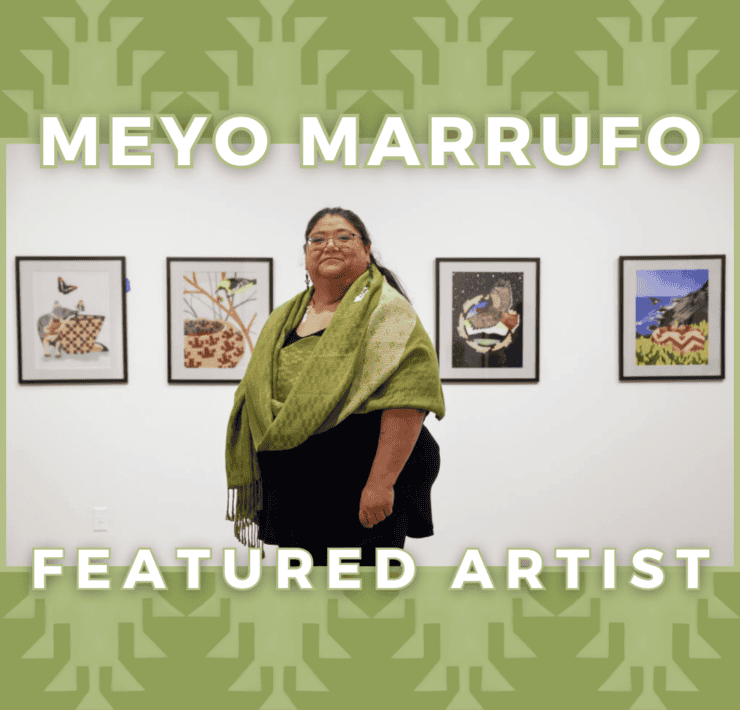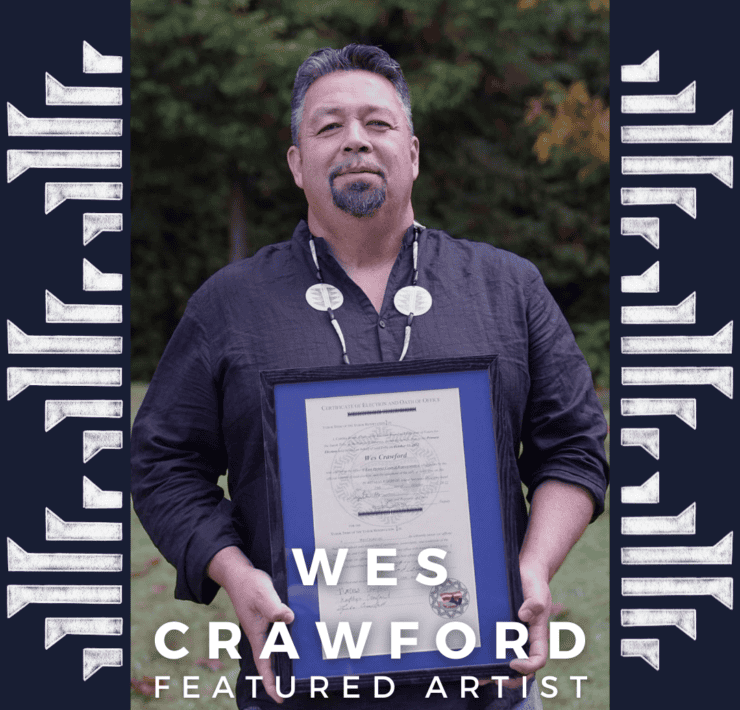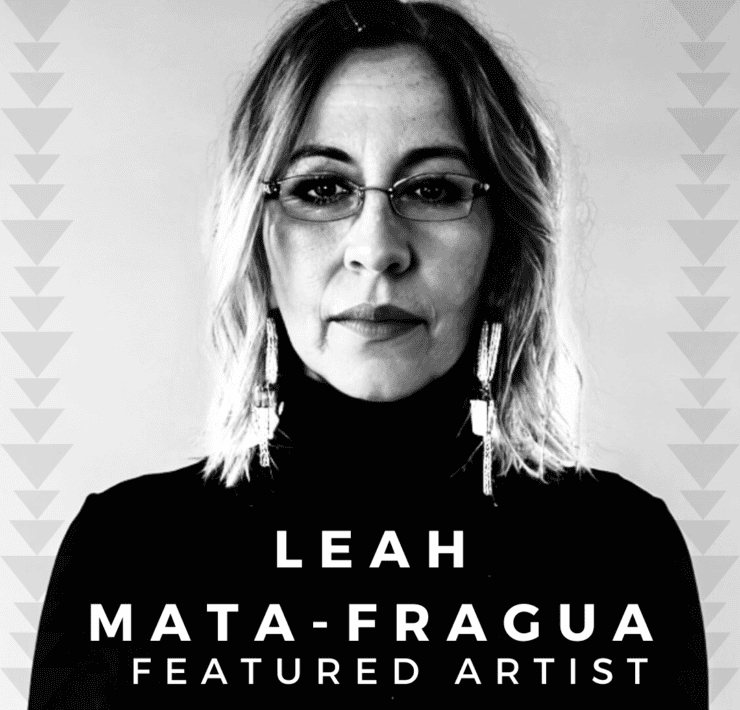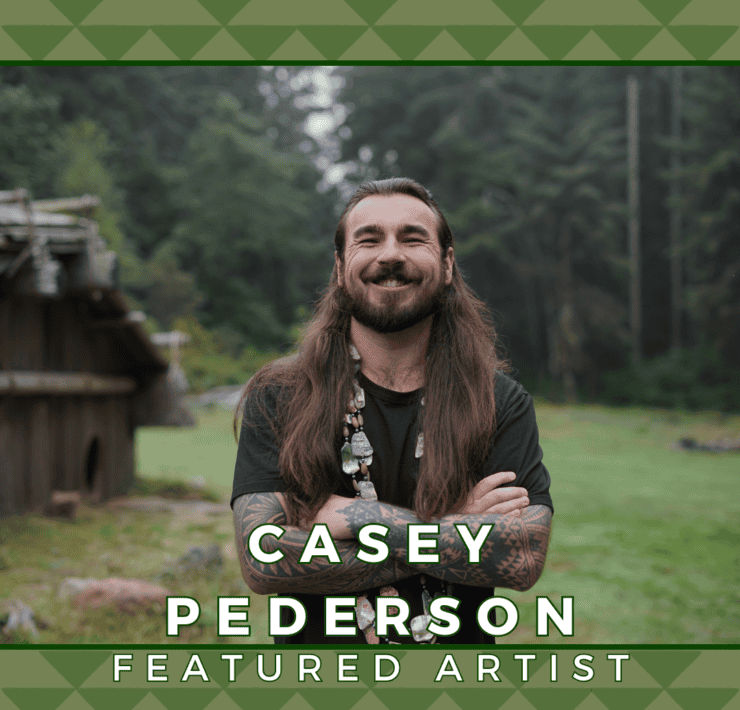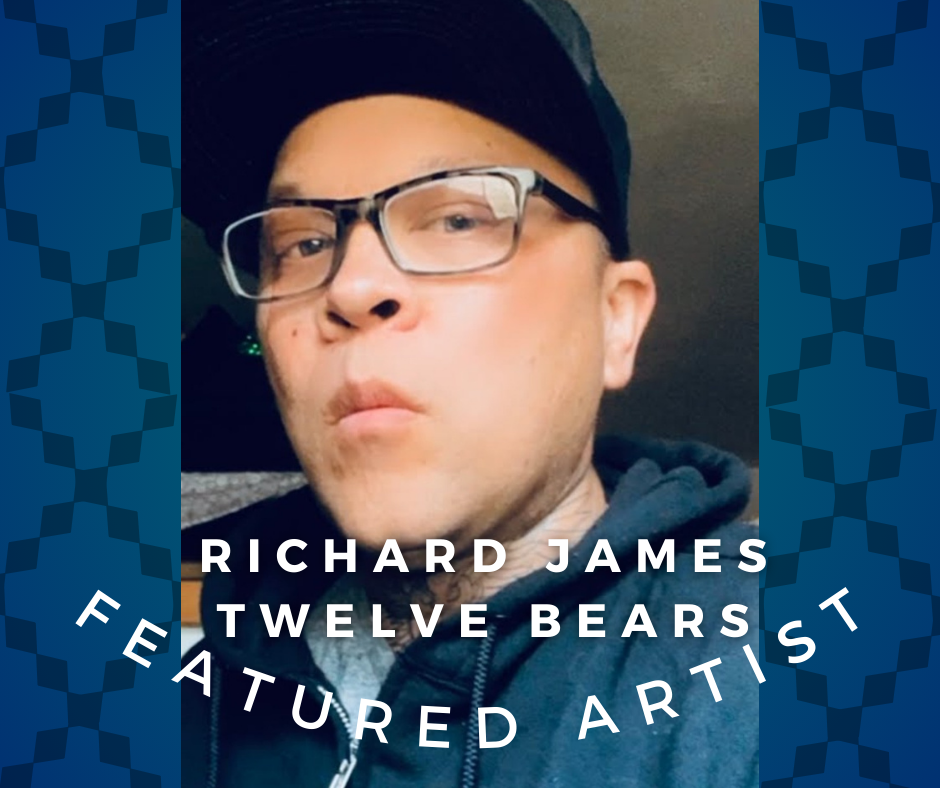
By Tavi Lorelle Carpenter
Meet this week’s featured artist, Richard James Twelve Bears, an abalone carver and jeweler. Enrolled in Round Valley, Richard is of Fort Peck Assiniboine, Yuki Pomo and Pit River descent on his mother’s side and Miwok descent from his father’s side. In fact, many of you may know of his father, the renowned jeweler Razzle Dazzle.
Richard’s story is one of reconnection, having been a child during pre-ICWA days, he was one of the children that was separated from his culture. While he did have his grandfather Bill Franklin, in his life, being placed in foster care during this time ensured that he was estranged from his parents and not placed with family. This disconnection would last almost 15 to 20 years. Carving was not something he grew up learning, in fact, he’s only been carving for the past three years. When I asked him why he started learning to carve, he told me it came back to reunion.
He had started doing jewelry with his mother and grandmother as a means of reconnecting with family. It was in these early days of just starting to make jewelry, that a chance encounter at an event led to him reuniting with his father.
“My dad and I started a relationship again. And it took a lot because we just had no contact. We didn’t talk to each other. I ended up running into him at an event and I knew that it was time to talk to him. So I tapped on his shoulder, he turned around [and it] looked like he saw a ghost.”
His father then told him, “I knew in the right time we would come back together.”

In the process of bonding with his father, Richard would discover his skill for carving. Though at first, his journey started out of pure necessity.
“I had to buy all my own [abalone] bears from people out here. And they were like $85 a bear! So, I told my dad one day, I said ‘Dad, I can’t afford to buy these bears!’ And he goes, ‘Well, make your own!’ And I’m like, “I can make my own??’”

His father came over with all the parts and saws Richard would need, gave him some abalone and started working with him as a mentor. Richard told me he had always been a creative person, writing poetry, short stories and music, he phrased it as having a “creativity in his blood”. But he had no idea he would become an abalone carver.
Not to say it was an easy path.
“I was terrible for the first year. I was just so horrible. I was wanting to quit, you know, [because] I [couldn’t] do it the way I wanted. Then one day, my dad left me for a weekend. I did an eagle, I did a hummingbird. I just did all this stuff in one weekend. And everything was good. My dad came by [and said], ‘What happened to you?’ And I go, ‘Creator man, just blessed me!’”

A lesson for us all that it’s important to keep going, especially when it comes to traditional knowledge. It’s not always easy, it can be in the blood but it still requires commitment from us to keep working at it.
Such a key takeaway of Richard’s story is how learning to carve helped him in coming home. For a lot of California Indian people, our story is one of being taken from our homes, being dispossessed of our land and our kinship networks fractured. But this process of coming back, trying to reconnect, can be powerful and healing, for self and the wider community. Reconnecting with your heritage can be powerful for anyone but for fractured communities it is not only healing but necessary for getting yourself in a good way.
“I felt it in my spirit that I was coming back to where I belong. Yeah, this is what I’m supposed to be. And you know that feeling is like when you get around the right people, they always say your nervous system reverberates when you’re around the right people. I think that’s what has really settled me as a person that has had PTSD and anxiety and isolation. My nervous system is coming back into alignment with who I’m supposed to be. It’s identity. It’s about identity.”
With Richard’s work, the care and intentionality is very evident. When speaking with him, it became clear that his work comes from a place of good intentions.
“I don’t send anything out, unless I know it’s been smoked down, saged down, prayed over. My intentionality is to put out that good energy, that the work is blessed. I want this to be a healing thing. I want other people to feel proud of their connection to culture when they wear my pieces. And that’s what it’s about, is making people feel proud and feel that good medicine. Like every bead, every color-I’m so intentional about the colors, what needs to come out of it. So I feel like that’s where you have to be in tune with the artistic side of everything.”
This is a reconnection in itself, reconnecting to culture for Richard is met by both the act of creating in a good way and sending it out in a good way. It ties back into how one carries themselves when being creative.
“I don’t touch anything unless my spirits’ right. I do believe that all of this is a lot of divine energy and prayer. If I’m upset, angry, mourning, anything that’s not right. Whether I have a grudge against somebody, you know, even if I get into an argument with somebody that day, I won’t touch my pieces.”
In a lot of my conversations with artists across the state, this sense of internal harmony is an important part of the creative process. But one thing that stands out in my mind when speaking with Richard, was how his ability to work with traditional place-based materials and learning to carve has supported him in cultivating that inner balance. They were and are active ways of forging a sacred bond between himself, creator, the land, and the ancestors. It strikes me as funny that after a year of persevering, it would take one weekend for carving to click-in. It’s important to recognize both the hard work and the blessings that come from approaching life in a good way.
When asked what advice he’d give to other artists, Richard shared that to him, it goes back to carrying oneself in a good way.
“I would say, your spirit has to be right to do this. With your own trauma, there [has to be] a lot of letting go when you approach a [creative space] and you’re doing something sacred, that’s the way you have to look at it. As a sacred space and a sacred calling. You have to be called to do this, anybody can be trained but I do believe that there’s a lot of ancestral spirits behind us when we’re [creating]. Don’t underestimate dealing with your own bitterness, unforgiveness, whatever you got going on. That’s the most important for creator to put his hands on you, is for you to align with him. It’s a spiritual work.”
Indeed it is!
–
It takes a community! Please consider showing your support for Richard James Twelve Bears by visiting his website: https://www.norcalnativejewelry.com/
Or following him on Instagram


